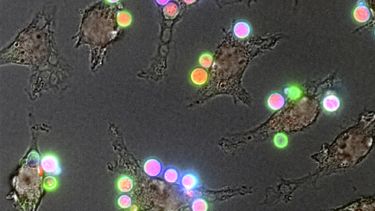Research expertise at the Bateson Centre
To understand human disease, it is essential to study patients with the disease. This generates research questions that can only be tested by building a model - either an animal model or a computer generated model that behaves like some aspect of the human disease.

Overview
Models of human disease can give important insights that can feed back to studies in humans. We believe that new understanding of human disease will need the generation of new, innovative models, informed by existing models but not constrained by them. We use many different models, but have world-leading expertise in generation of innovative disease models, including strength in the zebrafish and fruitfly.
Basic Scientists and Clinicians from the Faculty of Science and the Faculty of Health transcend school boundaries to exploit synergies between their complementary expertise within the theme of Innovative Models for Understanding Human Disease.
Our strengths in this area have attracted a large number of junior fellows to Sheffield, who bring prestigious external fellowships, and many of these are now highly successful independent scientists.
Maintaining health
Principal Investigators (PIs) in the Centre take advantage of a wide range of tractable animal model systems. Our critical mass is in zebrafish, but we have expertise in complementary systems - Drosophila, zebrafish, chick, mouse and Dictyostelium.
We investigate how cells and tissues behave in vivo during healthy development and disease, and the dual role of phagocytes in tissue plasticity and host defence.
The important role of mechanical forces in morphogenesis and cell behaviour is leading to increased interactions with physical scientists and engineers with interests in the growing field of mechanobiology; additionally, a number of groups are adopting computational modelling as a tool to understand how myriad individual molecular and cellular interactions lead to the emergence of form and cell behaviours.
Treating disease
We study disease, degeneration and decline, all of which occur when the mechanisms which maintain homeostatic balance within the body are disrupted.
We explore medical problems that pose major health burdens to our society, focussing on congenital diseases, infections and diseases of ageing.
There is a growing awareness that chronic diseases are the biological consequences of adverse interactions between genetically-determined disease susceptibilities and risk-modifying environmental factors.
The simple model organisms that we use provide remarkably powerful tools to investigate these pathogenetic mechanisms, by visualising biological change, including repair and regeneration, in real-time within the body, and to identify and then characterise the roles that different genes, proteins and cells play in these processes.
To support these activities, The University has world-class Zebrafish aquaria, Drosophila vivaria and state-of-the-art microscopy including two new LightSheet microscopes (BBSRC- and BHF-funded) as well as two MRC-funded Super-Resolution microscopes.
The Small Molecule Screening Unit provides a platform on which to examine cellular dysregulation and the means to screen for small molecules that can modulate cellular behaviours in model organisms.
The insights obtained from these screens act as a springboard to develop new therapies for diseases.


